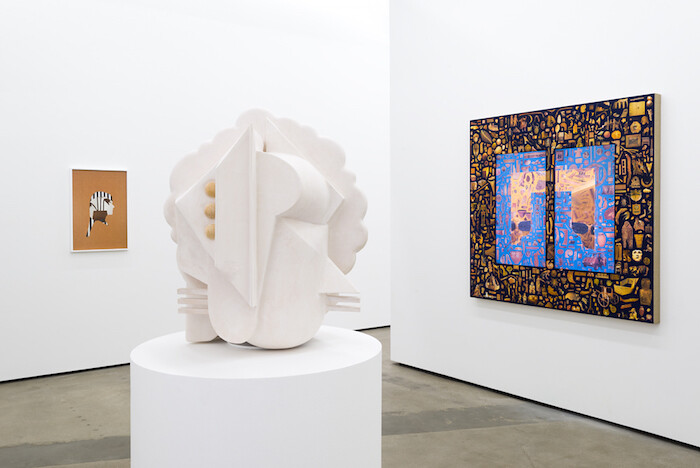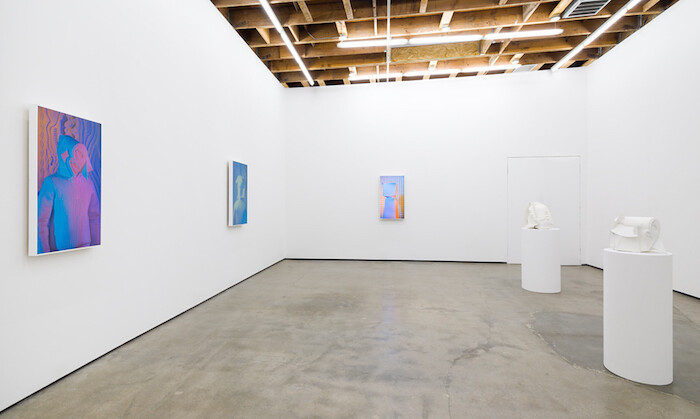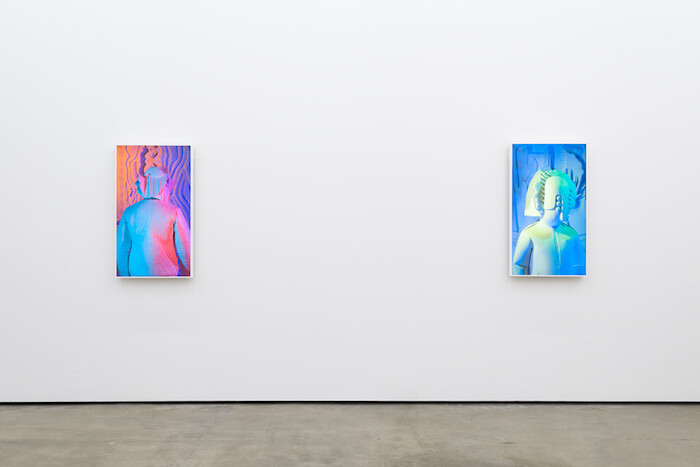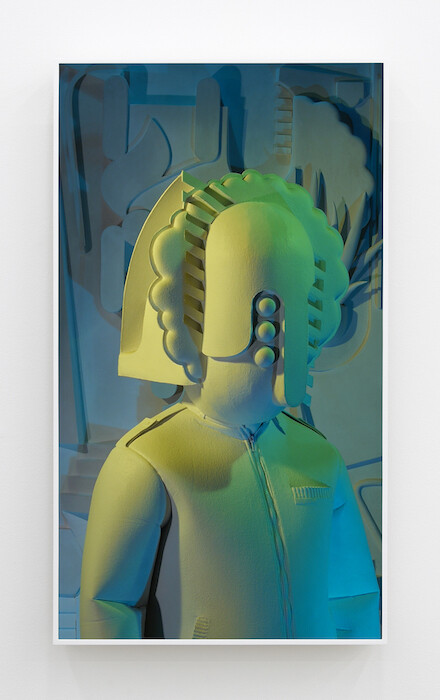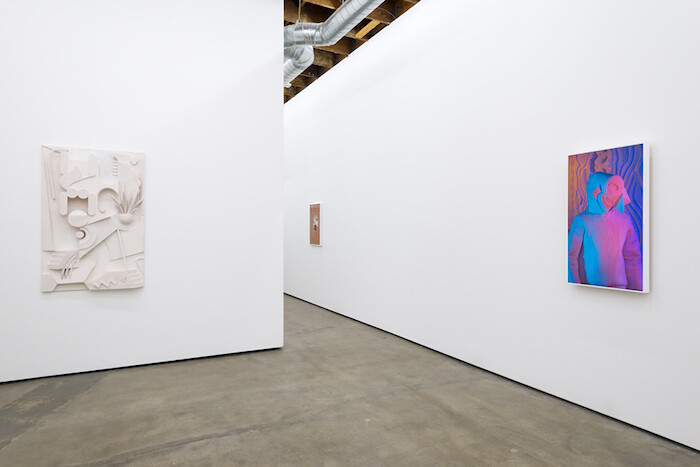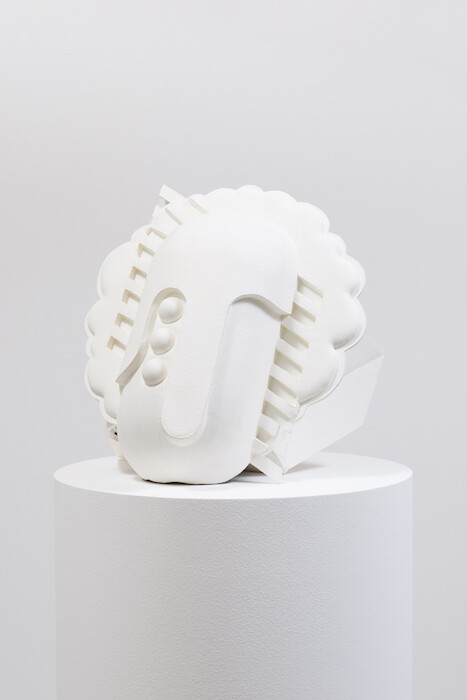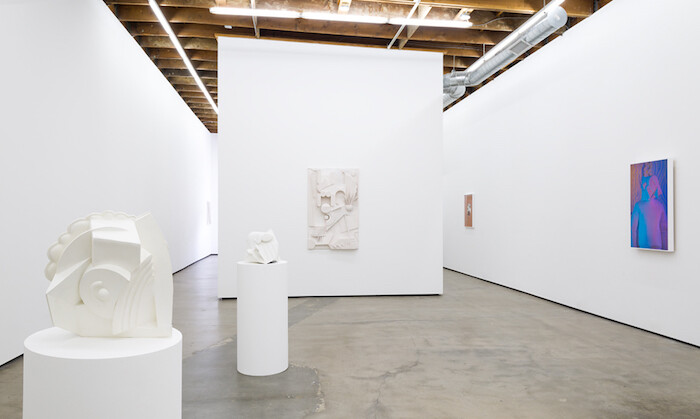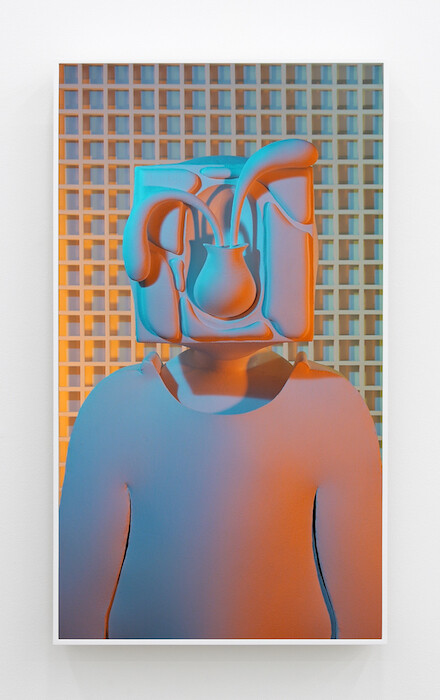Here’s the latest Spring menswear line worn by the hottest male models of the twenty-eighth century, those jaunty scions of cyborg overlords. Our wetwear bodies found a hardware durability after we and our machines, long flirting, finally coupled. Moodily lit with mint and hot pink, humanoid bods sport flight jackets and tennis togs and fencing uniforms with patterns like alien cryptography, their sculptural faces as interchangeable as their clothing. Once the singularity curves past us, why wouldn’t we change our faces at will? Who needs a mouth when we can communicate telepathically, plug in for nourishment? These head-sculptures angle with Bauhausian geometries and deco motifs, the curves of Incan spaceships and patterns of ancient Greek friezes. All of it soft and foamy. Even cyborgs yearn for a little pliability. The models gently revolve on screen, giving us the whole fit, a catwalk turn, even as those bods stay otherwise still in their languorous revolutions. Nearby, the heads of these on-screen models sit on plinths in all their bend and ornament, ready for a discerning consumer to find the expression that fits their fast-paced cosmic lifestyle, a new head for a new season.
Brian Bress has long been casting characters and creatures into videos carefully composed with a slow movement that summons worlds, usually with the barest outlines of story. When Bress first started out, his characters pantomimed and improvised through odd sets with an odder humor. The slow logic and subtle pathos persists even as the modes and means have grown more sophisticated. The sets have focused into the narrow confines of tightly framed figures, and his performances have lost the raw, loose jangle, evolving into elegant displays. Here a framed double screen embedded in a collage, Looking (for Josef Albers) (2017), reveals two yellow blockheads, edging on gleefully silly with their squared-off noggins and unblinking eyes. They jigsaw through the picture, slicing through the surface to reveal more of themselves with each cut. In their mouthlessly mute expressions, there’s a certain chilled distance, almost dour and existential, though clearly still cartoonish. Albers made squares bounce and push from the surface with his expert use of color; Bress punches out squares with a saw, the illusionism of space made with other means. The all-over collage in this piece, each clipped element floating in a field of color, has patterned Bress’s work for years and here (perhaps another nod to Albers) the chromatic palette is specific, a unifying force to disparate objects.
Functioning almost as animated paintings, Bress’s videos hang often cleanly framed, here as elsewhere, and much of the discussion around his work has emphasized this mode, concentrating on the relatively novel presentation and his characters’ (almost always Bress in costume) direct interaction with the picture plane. The refined display feels nearly beside the point, though the confrontation feels elemental. Though it’s neither the immersion of cinema nor the theater of retro-tech with boxy monitors or dangling wires, the display is aestheticized, containing all the mechanisms in the wall or frame. This move makes for a little illusionism but also makes the characters’ bodies more relative, on the other side of windows rather than just moving pictures. In the sense of strange time, the lugubrious sadness of his characters’ movements as they fill time in their lonesome screens, I find myself relating to them not as pictures but as creatures caught behind glass in a loop—Samuel Beckett overseeing the circle of hell reserved for children’s television personalities. They don’t even have the mercy of the squelch and mess of bodies, caught in shapes shorn clean of the mercy of our wet mortality.
Heads cut clean on plinths might have rawness and rot. These plinthed heads, fascinating pastiches, don’t feel alive precisely or like props, really—stale objects left lifeless without action. They are instead something weirdly anthropological and consumerist: both museum displays for curious artifacts from an unknowable civilization and high-end objects for space boutiques. Fashionable flair for a future yet formed, skinned with the softness of foam instead of flesh.
